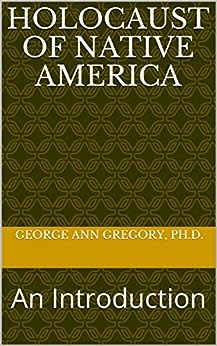The Native American Holocaust: Unveiling a Dark Shadow of American History
As time continues to rewrite history, we unravel deeper layers under the mask of the American narrative. Along this journey, we inevitably confront uncomfortable truths that sometimes remain unheard, unacknowledged, and subsequently lose their rightful place within the annals of our past. One such painful chapter is the Native American Holocaust, an untold saga of unfathomable suffering inflicted upon the indigenous peoples of this land.
At our museum, we aim to shed light on this often-neglected part of American history, offering visitors an opportunity to explore this dark dimension and comprehend the impact it has had on the Native American communities as well as our collective identity.
A Closer Look at the Exhibit:
Entire families casually torn apart, forced marches to desolate lands, systematic lethal policies—these representations can be found amongst the exhibits that bravely explore the Native American Holocaust. Drawing from painstaking research, we present a comprehensive understanding of the historical events, their background contexts, and the devastating effects that continue to resonate today.
Visitors can immerse themselves into the intricacies of the exhibit, examining artifacts and primary sources that narrate the stories of the trail of tears – a sorrowful reminder of the Cherokee removals and countless other Native American tribes displaced from their ancestral lands. The harrowing words etched into the narratives of those who survived linger as haunting echoes, never forgotten, but forever seeking acknowledgment in our collective memory.
Architects of Change:
Throughout the exhibit, we highlight the dark figures that played pivotal roles in this often-overlooked history. Responsible for formulating and executing policies resulting in the deaths of thousands, they contributed to a haunted legacy born from greed, prejudice, and demographic conquest.
Informative panels provide visitors with extensive profiles and painstakingly researched data on policymakers and military leaders who implemented devastating actions. Unveiling these historical figures prompt reflection and genuine empathy for those whose lives have been profoundly upended and alter our understanding of the nation’s varied layers and legacies.
Building Compassion and Empathy:
Studying history allows us to confront uncomfortable truths as we come to grips with the actions and consequences of our collective past. By offering a compassionate space for discussing the Native American Holocaust, our exhibit empowers visitors to reflect on the complexities of history, fostering greater understanding and empathy for these often marginalized voices.
Leaving a Lasting Impression:
By examining the Native American Holocaust within our museum, both historians and lay visitors develop a comprehensive understanding of America’s multifaceted history, acknowledging the atrocities committed and the significant occlusions that have shaped our societal fabric.
By accepting the darkness of our history, we work towards reckoning with the devastating events of the past. Ultimately, it is my hope that this exhibit serves as a vehicle for open dialogue, enlightenment, and a catalyst for ongoing reconciliation – fostering a space in which we can actively build a more inclusive and compassionate future.
In revisiting our histories, unpleasant narratives enrich our understanding and compel us to strive towards a more comprehensive understanding of ourselves. May our visit to this exploration expand our capacity for empathy, promote healing, and shape a brighter future for all.
